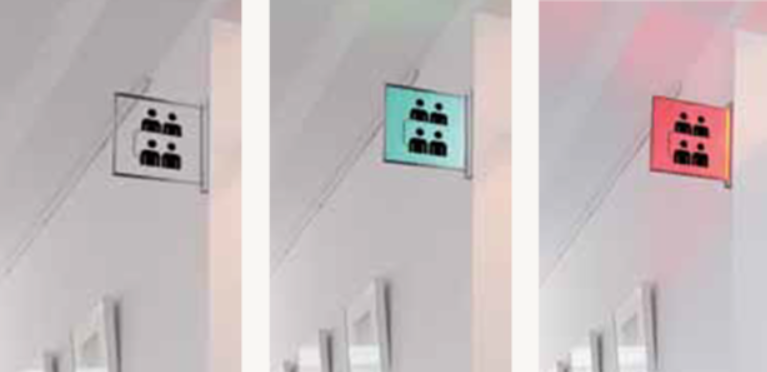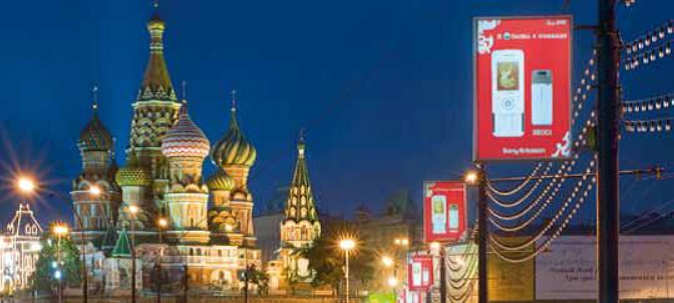ACRYLITE® LED (ENDLIGHTEN)
ACRYLITE® LED (EndLighten) is the perfect solution for edge-lit applications. Light is fed in via the edge of the highly transparent material and evenly emitted across the surface. ACRYLITE® LED (EndLighten) is a transparent colorless material offered in various grades and thicknesses. It is the ideal material for evenly illuminating a transparent surface with LEDs. The surface glows in the same color as the chosen LED.
If no light is fed in, the material offers a clear view without any disturbing optical effects due to clouding, halftone printing or inscribed textures. This makes it perfectly suited for architecture and design, furniture, store fixtures or exhibition booths. It can be used for example as an illuminated partition or door infill panel, or for ambient lighting. In non-transparent applications, ACRYLITE® LED (EndLighten) is the ideal material for very slim, large-scale luminous displays and picture frames, luminous ceilings and walls, city light posters and many other uses.
The clear light-diffusing particles embedded in the PMMA deflect the light rays entering the sheet edge. Total internal reflection in the light guide is suppressed, allowing light rays to exit the sheet via the surfaces in a controlled manner. This effect provides a uniformly glowing surface. Clear ACRYLITE® conducts light by means of total internal reflection. Light rays remain inside the sheet only exit via the edges. The diffuser particles embedded in ACRYLITE® LED (EndLighten) deflect light rays and suppress total internal reflection. Light rays can exit the sheet via the surfaces too.

Material properties
In order to determine the size of the light guide, it has proved useful to define the area to be illuminated. This is:
The largest distance between several light sources
Or, if only one light source is used, the distance between the light source and the opposite unlit edge
Measurements show that uniformity and efficiency move in opposite directions, and the grades were optimized correspondingly. Since the human eye perceives brightness logarithmically, it cannot recognize differences less than about 30%.
Forming ACRYLITE® LED (EndLighten)
ACRYLITE® LED (EndLighten) can be thermoformed, e.g. curved. The lighting properties remain more or less intact. Light rays that are fed into the edge closer to the center of the curvature impinge on the surface at an angle that is smaller than the critical angle of total internal reflection, due to the curved surface. This means the light is not conducted into the sheet at this point, but involuntarily passes across the surface to the outside. At this point, the surface shines brightly, whereas this light is missing further from the point of light input and can no longer reach the surface via the diffuser particles. This may result in an unevenly lit surface.

Cleaning acrylic sheets
The light-guiding function ACRYLITE® LED (EndLighten) may be disturbed by soiling on the sheet, e.g. finger marks, but also by surface scratches. Light is refracted at these points and is therefore emitted more strongly. To prevent this, an abrasion resistant coating can be added to one or both sides of the sheet. Since this protective coating does not influence the light-guiding function of ACRYLITE® LED (EndLighten), soiling or scratches do not show through
Optimized structure of a transparent application
This type of structure maximizes the amount of useful light, i.e. the light that is not lost by premature emission at the edges or the surface, in non-transparent applications. The covers or image carriers must not be bonded or laminated onto the entire surface of the ACRYLITE® LED (EndLighten), because optical contact would produce disturbing brightening or darkening effects. The correct spacing should therefore be observed during construction.
Typical structure of an ACRYLITE® LED (EndLighten) frame system
Polishing the material edges: All edges should be polished. To minimize diffusion losses during light input, rough edges are smoothed by means of diamond milling cutters or flame polishing. Laser-cut edges require no further polishing.
Scratches can be completely removed from ACRYLITE® LED (EndLighten) by polishing.
If the surface is damaged due to external influences, more light is emitted and uniform light distribution is impaired. Polishing makes it possible to completely restore the optical properties of ACRYLITE® LED (EndLighten). Light is once again uniformly distributed in the sheet. All edges should be polished to minimize diffusion losses. To avoid light losses via the unlit edges, they should be provided with a reflective surface, e.g. by painting the inside surfaces of the clamping profiles white. The LEDs should be placed as close to the edge as possible for optimal light input.
What are the advantages of LED technology?
LEDs are energy-efficient and save electricity. Their service life is over four times longer than that of fluorescent tubes. When their service life is over, all that happens is that their brightness slowly fades. There is no display failure. RGB-LEDs allow various color programs to be run. The light can simply be fed into the edge, and almost all the light passes into the sheet.
Architectural Plastics helps designers, architects, corporations, museums and private collectors bring their concepts to market with a variety of modern materials like TruVue Optium Acrylic, Acrylite Acrylic, Makrolon GP Polycarbonate, LUMAsite, Corian, Komatex (Expanded PVC) and Polygal. If you are looking for a transparent plastic that is easily moldable and has high impact resistance, it may be acrylic plastic that you ultimately need to finish your project. Whether you need one unit or thousands, our dedicated employees and state-of-the-art plastic parts manufacturers machinery will ensure the success of your project.





